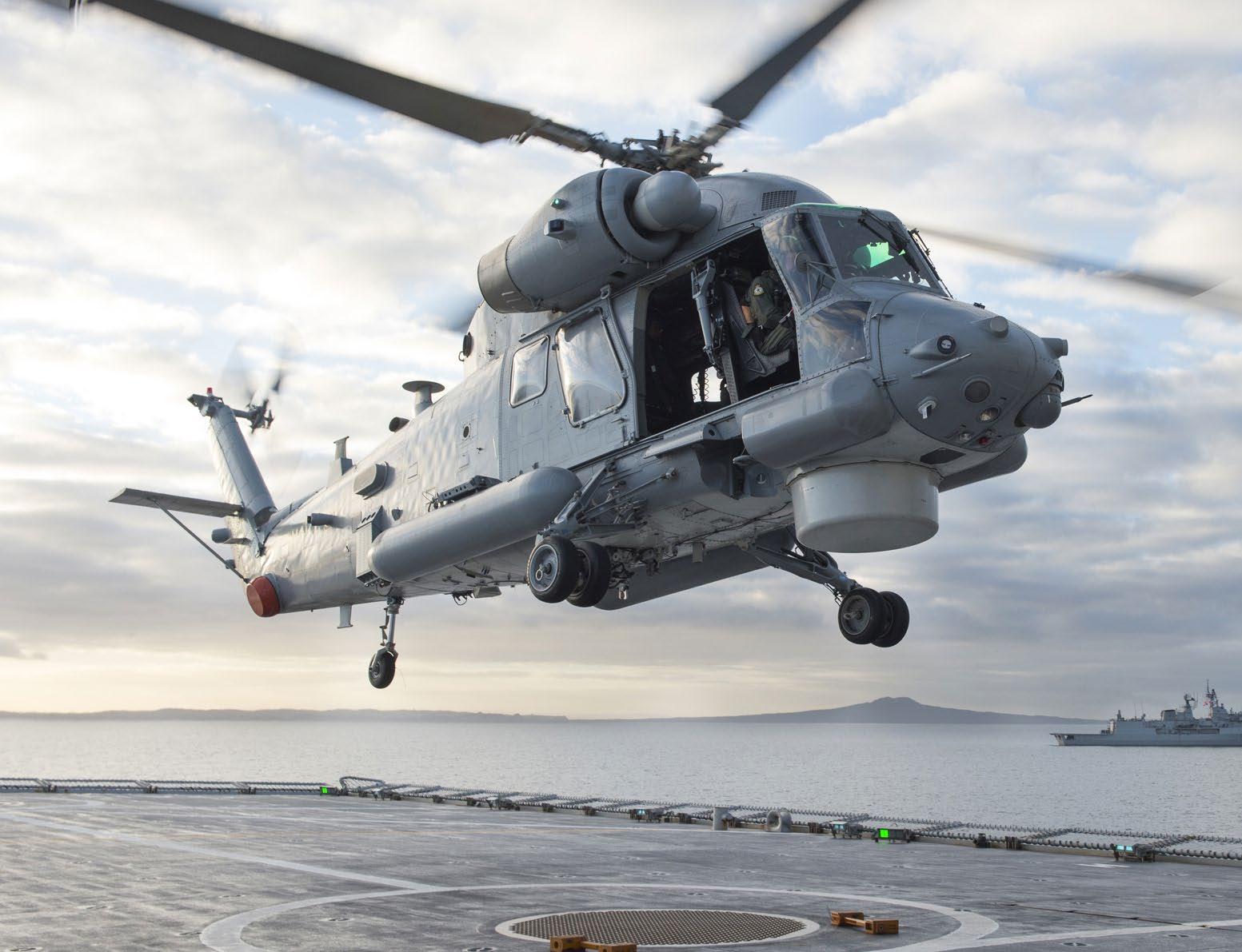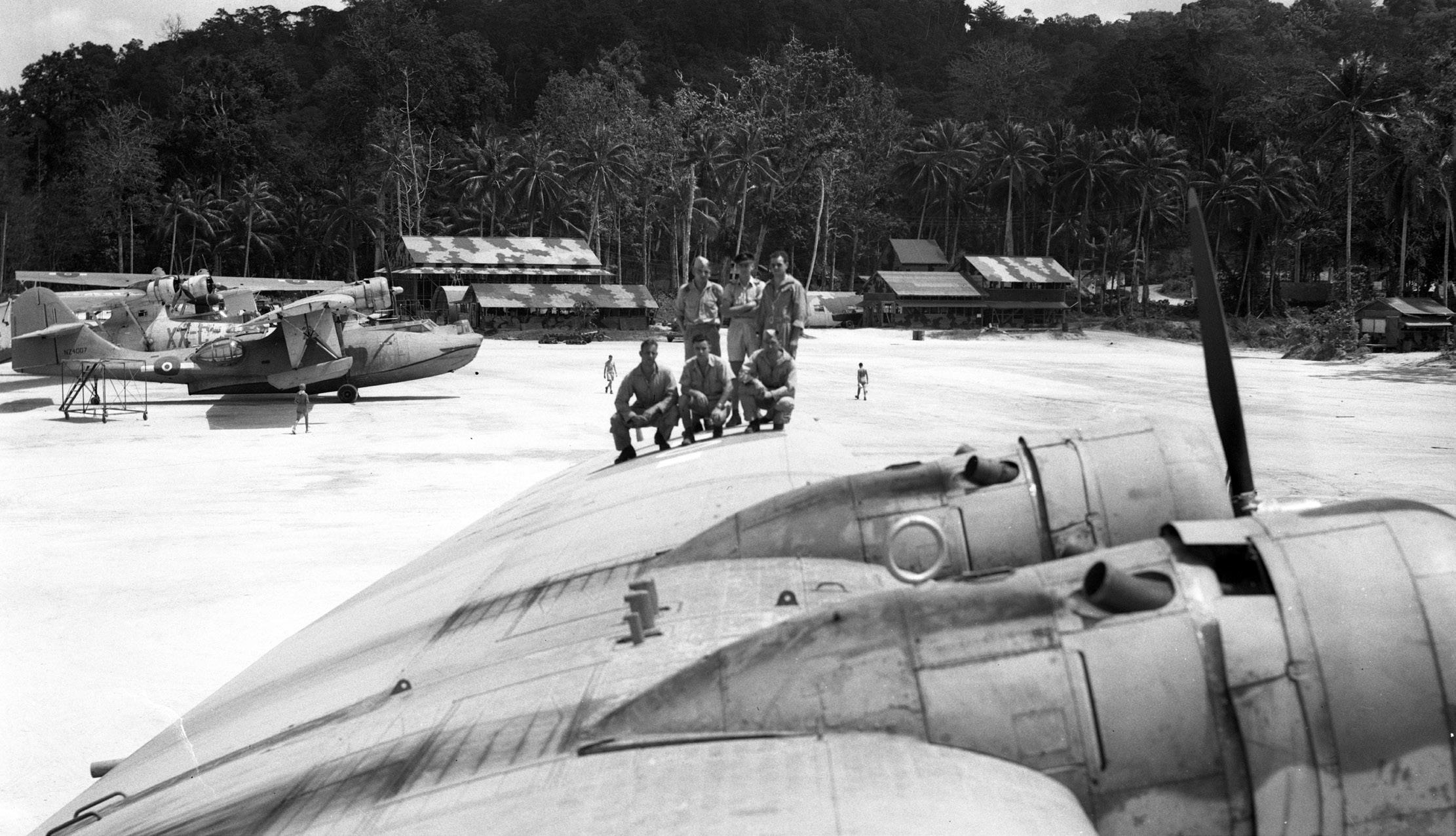
2 minute read
Operating over the horizon
The Air Force’s maritime squadron, No.6 Squadron, has been operating over the horizon for the past 80 years.
The No.6 Squadron is a bridge between the Air Force and Royal New Zealand Navy. It undertakes antisurface warfare, underwater warfare, maritime patrols and surveillance, search and rescue, and other utility operations (winching and load lifting).
Advertisement
It was created in World War II as an Army co-operation unit. Then they flew Vickers Vildebeest and Hawker Hind aircraft, before they took delivery of the well-known Catalina.
Based in the Pacific, their tasks included servicing remote radar stations, the Coastwatchers, and a Mission Station on Malaita, but their primary role was maritime reconnaissance patrols and airsea rescues. In total they rescued
79 servicemen (68 US and 2 New Zealand airmen, and 9 people from two US ships) in 25 missions. Two squadron members who later achieved prominence were Edmund Hillary and Eric Heath, who became an artist, illustrator and editorial cartoonist. The squadron was disbanded in August 1957, but re-formed in 2005. It is manned by Royal New Zealand Navy observers, pilots and helicopter loadmasters and is now based at Whenuapai flying Seasprite helicopters. Those choppers can embark on HMNZ Ships Te Kaha, Te Mana, Aotearoa, Canterbury, Wellington and Otago and can be equipped with anti-ship missiles and torpedoes.

“I think that the hybrid nature of No. 6 Squadron makes us very unique,” Lieutenant Commander (LTCDR) David Roderick said.
“Our personnel really enjoy the smaller squadron – how we are a bit tighter knit than some of the larger fixed wing squadrons. That connection makes a difference when we all go away together for months on a ship.”
The primary mission of the aircraft is anti-surface warfare, which is the key difference from the other Air Force rotary squadron, he said.
“We’ve got anti-submarine warfare as well. So we have the ability to visually look for submarines, but also then drop weapons on them if that’s required.
“Aside from the ability to launch weapons, another point of difference for the squadron is the ability to operate in a maritime environment and deploying on Navy ships for significant periods of time – you’re looking at six to nine-month trips.”
The aircraft will also be used by the ship as an ‘air spotter’ when it deploys its own gun on targets beyond the horizon line, LTCDR Roderick said. Alongside that capability is the search and rescue, medical evacuations, and humanitarian aid and disaster relief work performed by the crew. In 2022, the squadron was called to help after a volcanic eruption and tsunami hit Tonga. They flew reconnaissance missions around the islands and reported back to command and Joint Forces Headquarters the extent of the damage.
Another major event the team was involved in was the 2019 Whakaari/ White Island eruption.
“One of our aircraft was on HMNZS Wellington and flying reconnaissance flights to the crater. The island was still in the phase where anything could happen. They flew into the crater a number of times to assess the suitability for landing,” LTCDR Roderick said.

The operation was difficult, with personnel still dealing with the emotion of the task, he said.
“But it’s something they can all be very proud of and it was great that the work was in conjunction with the Navy.”








